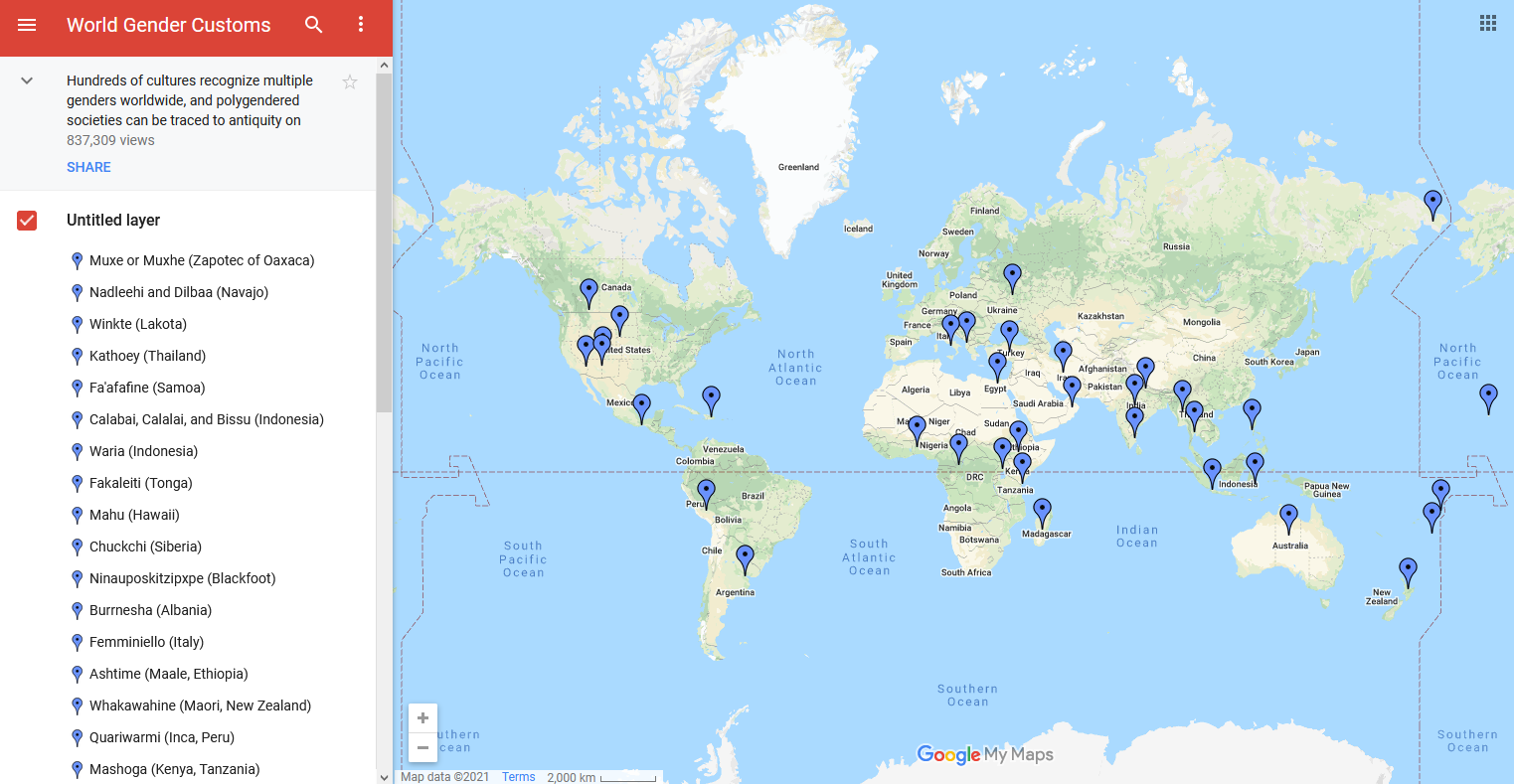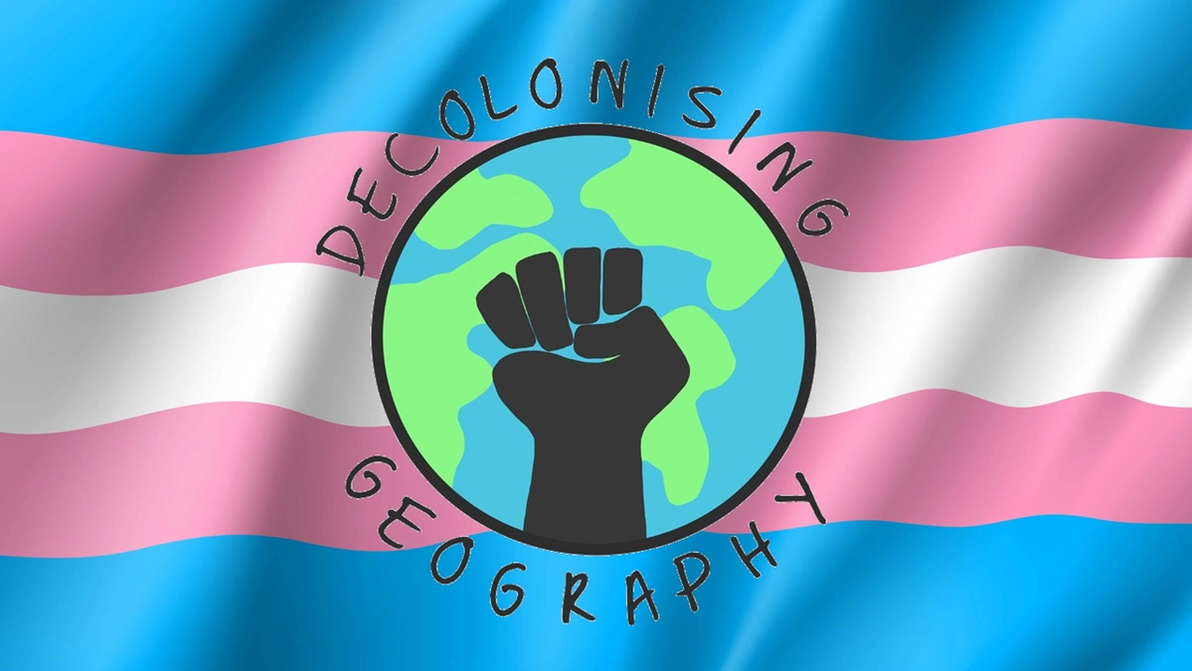My love of geography and identifying as a 'geographer' has played a massive part in both embracing and celebrating the fact that I myself am a transgender person. After all, a significant element to geography is to explore and understand the wonderful diversity this planet has to offer, both physically and socially.
While the narrative around decolonising education has largely coalesced around racial inequality and movements such as Black Lives Matter, and rightly so, 'gender diversity' intersects exceptionally strongly with it.
And so today, on International Transgender Day of Visibility 2021, I'll be highlighting both some of the issues facing gender diverse people through a decolonisation lens, but also celebrating the colour and beauty that such people bring to the world.
What is International Transgender Day of Visibility (TDOV)?
TDOV "is an annual event occurring on March 31 dedicated to celebrating transgender people and raising awareness of discrimination faced by transgender people worldwide, as well as a celebration of their contributions to society." (Wikipedia). On the day, there is a ramp-up of news, stories and events focusing on trans people, and a chance to give everyone the opportunity to learn first that trans people exist, to accept and respect that they do, and learn more to understand the issues that they face.
What's it got to do with 'decolonisation'?
The concept that gender is a masculine-feminine binary, tethered to a person's biological sex is very prevalent in western society. Through the process of colonalisation, both overt in the age of European empires and internally leading to individuals conforming to societal norms, gender diversity beyond this binary has mostly been either diminished or subjugated. There is much further reading that can be undertaken with this issue which you can seek out yourself, but I'll point to Lucas Ballestín's 2018 essay "Gender as Colonial Object" and "The Coloniality of Gender" (2008) by the late Maria Lugones as two suggestions of recommended reading, with the latter being a deep read which intersects issues such as women's empowerment and race.
It is important to note, however, that many do consider the term 'transgender' itself to be a western construct and definition, and see the application of it to gender-diverse cultures as problematic in itself. Both Ballestín and Lugones make reference to this. In that respect, I'm using TDOV as a vehicle to celebrate and highlight gender-diverse cultures around the world, as a way of demonstrating that gender diversity in all humans is neither strange nor a recent 'fad'.
Examples of gender diversity around the world
As part of a 2015 film project 'Kumu Hina', Independent Lens put together a map of gender-diverse cultures. The map is certainty not exhaustive, but it does enable you to explore in an interactive manner. Do take time to explore.

I also came across this video on YouTube by Fi Black - something they put together for a school project. Given my background as a high-school teacher I just had to share it! It is a fun and enjoyable watch, but even better that Fi puts all their references in the video's description. Worth clicking through to the video on YouTube itself and checking it out.
A bit closer to home - Trans visibility in the 2021 UK Census
From enhancing visibility abroad to enhancing it at home. Just a few days ago a noteworthy event took place, and that is for the first time in it's 220 year history, the UK Census included a question on gender identity.
Since the census is an important tool for planning public services and funding, representation in the census is exceptionally important for marginalised and under-represented groups. For one thing, we don’t even know how many gender non-conforming people like myself are even out there because in every previous census to date, there was no question other than asking for assigned sex at birth (male or female). While the sex question remained unchanged in the census, there was a note that an optional question regarding gender identity followed later on in the survey. In 2018, the ONS stated bluntly that they “don’t know” how many transgender people there are in the UK, as “no robust data on the UK trans population exists.” There is a tentative estimate that it is approximately 200,000-500,000. And gender-nonconforming people are a beautifully diverse bunch too – subscribe and listen to the Fifty Shades of Gender podcast to see (or hear) what I mean! I pondered more about the UK Census over on my personal blog.
Being an ally
I will end in a manner that is true to form with TDOV, and that is with some links to ways that you can understand how to be a better ally to transgender and gender-diverse people. Having read this article is a fantastic start, and I sincerely thank you for reading it all the way through!
- Celebrate Trans Visibility by United Nations Free & Equal
- Some tweets from Percy Lezard, a Sqilxw person and Assistant Professor of Indigenous Studies at Wilfrid Laurier University:

